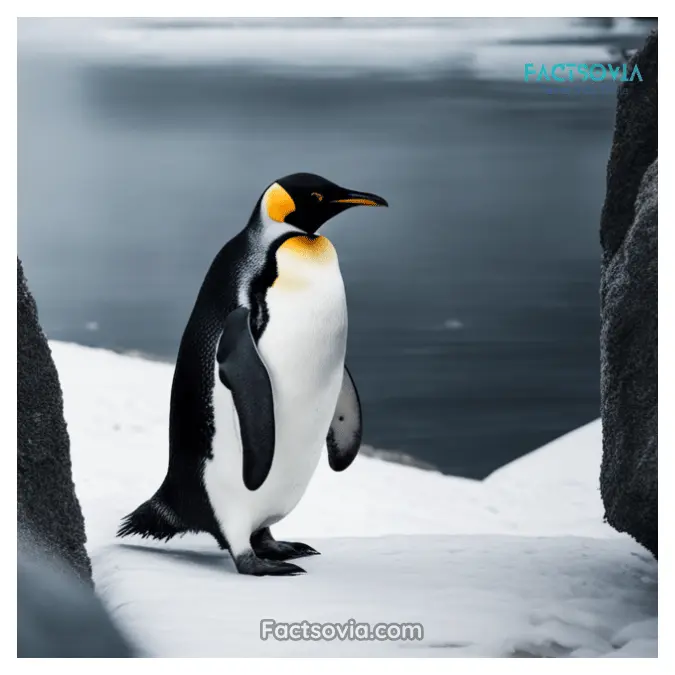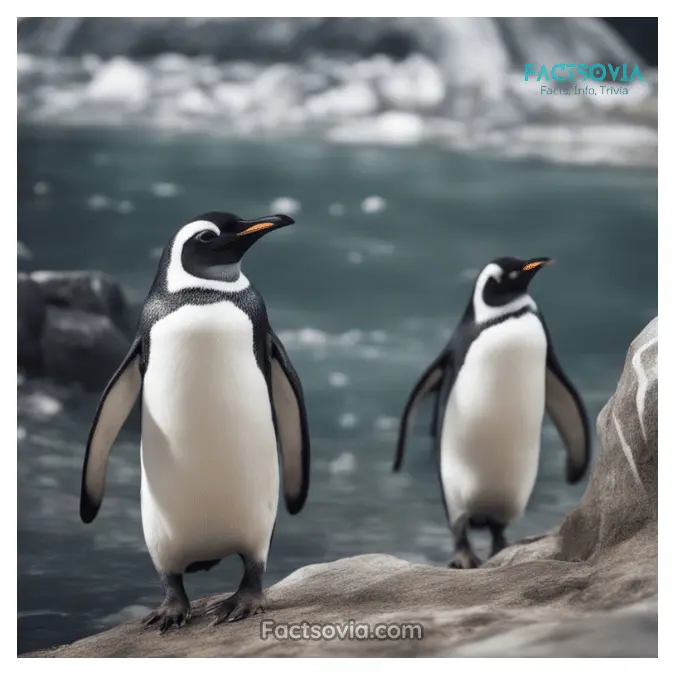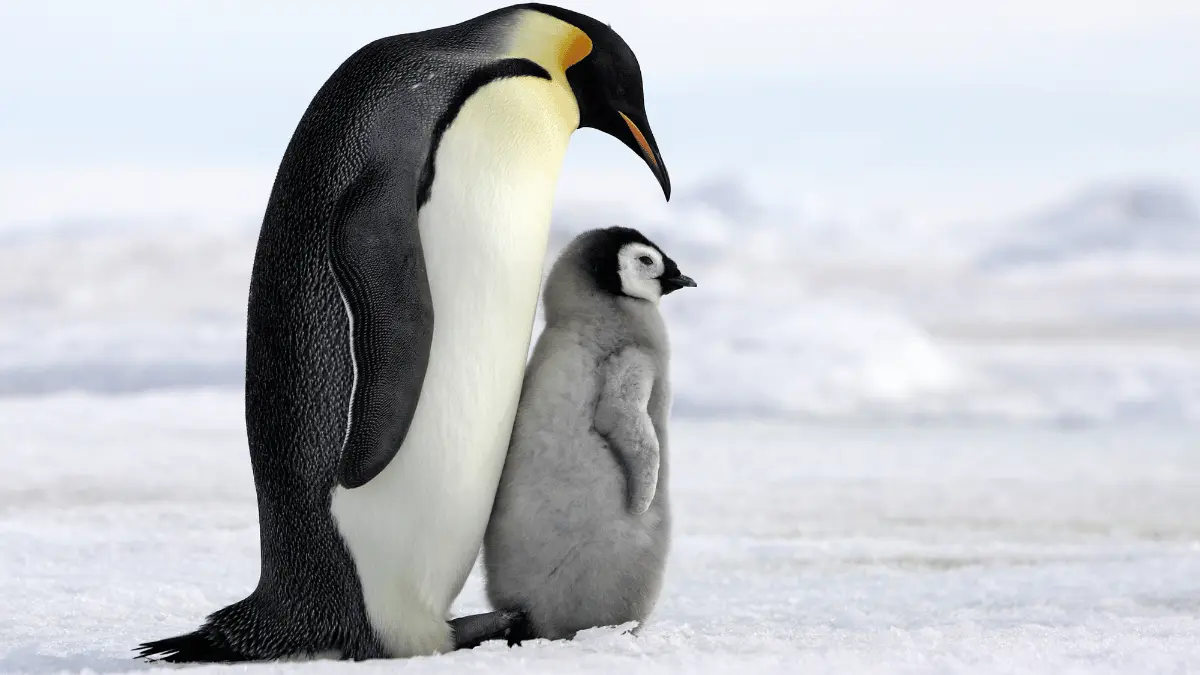We use affiliate links to run our site. When you buy through links on our site, we may earn an affiliate commission, without any added cost to you. Learn more
As an animal lover and writer for an informational blog, I’m often asked about the unique features of different animals. One common question I receive is whether penguins have feathers or fur.
In this in-depth blog post, I’ll provide a detailed explanation to help readers understand more about the feathers of these charismatic birds.
An Overview of Penguin Feathers
Penguins are birds, so unlike mammals, they do not have fur. Instead, penguins have feathers which serve several important functions:
- Insulation – The small, dense feathers help penguins retain body heat, which is essential for surviving the cold climates of Antarctica and the Southern Hemisphere.
- Waterproofing – The outer part of the feathers is coated with oil from a preen gland. This makes them water-repellent and protects the insulation layer underneath.
- Swimming – While penguins cannot fly, their flipper-like wings with shortened feathers are adapted for swimming and propelling through the water.
So in summary, penguins have specially adapted feathers rather than fur. But why do people sometimes think they have fur? Let’s explore this next.
Why Penguins Can Appear Furry

Despite clearly being birds, penguins may appear furry or fuzzy at first glance. There are a couple of reasons for this:
Short Dense Plumage
Penguin feathers are very short, only 1-2 centimeters long. They are also incredibly densely packed, with around 100 feathers per square inch!
This gives penguins a soft, thick appearance somewhat similar to fur. However, upon closer inspection, it is clearly composed of small, overlapping feathers.
Color Pattern
The black and white color pattern of penguin plumage can also add to a furry illusion. The black feathers in particular blanket the penguin’s back from head to toe, much like a fur coat would. The fluffy white belly feathers complete the furry look.
So while penguin feathers may seem fur-like from a distance, they have a distinct feather structure when viewed up close. Their special adaptations allow penguins to thrive in the harsh conditions of the southern oceans.
The Molting Process

Penguins go through a seasonal molting process where old worn feathers are replaced with new ones. This is crucial for maintaining effective insulation and waterproofing.
Molting generally occurs after the breeding season, beginning in late Summer and Fall. The process lasts around 2-3 weeks. Penguins cannot swim during the molt because they lose waterproofing as feathers fall out.
Molting starts from the head and moves down the body. Penguins appear patchy as feathers drop out in groups. All the small feathers molt first, followed by the wing and tail feathers. Once the process is complete, the penguin is covered in thick new plumage.
Unique Adaptations of Penguin Feathers
Let’s take a closer look at the specialized structure and features of penguin feathers:
Dense Short Down
Penguin feathers are very different from the long contour feathers of flying birds. They lack the central shaft, and are downy, very short, and dense. This traps air for insulation.
Overlapping Structure
The feathers overlap tightly like shingles or tiles, preventing cold air at the skin. Emperor penguins have the highest density, with about 100 feathers per square inch!
Waterproofing
Penguins coat their feathers in oil from the preen gland near the tail. This makes the outer surface waterproof, while the inner down remains completely dry.
Coloration
Penguins upper feathers are black, which camouflages them from predators when swimming. The white belly blends in against the snow and ice.
Dual Purpose Flippers
Penguin’s forelimb “wings” have evolved for swimming, with feathers that are stiff and short like paddle blades.
Warm Feet
Dense feathering covers penguin feet and legs, protecting them from freezing when standing on ice. Bare skin on the bottom aids walking.
As you can see, every aspect of the penguin feather is incredibly specialized for their environment and lifestyle. Their feathers allow them to thrive in frigid southern waters.
Interesting Penguins Facts: The Wonder Bird of The Animal Kingdom
How Do Penguins Care For Their Feathers?
Penguins take great care to maintain their feathers in peak condition:
- Preening – Penguins use their beak to distribute preen oil across their feathers for waterproofing. This also removes dirt and parasites.
- Bathing – Penguins will bathe in cold shallow water to rinse off any excess dirt and oils.
- Molting – The annual molt replaces all old worn feathers with thick, new plumage.
- Scratching – Penguins use their beak and flippers to scratch and groom difficult-to-reach spots.
Proper feather care is essential to penguin survival. Without healthy waterproof plumage, they could easily die of cold and hunger.
Penguin Species and Their Unique Feathers

There are 17-19 living species of penguin, with some variation in their specialized feathers:
- Emperor – The largest penguin has long streamlined feathers to dive deeply and withstand frigid Antarctic winters.
- King – This penguin is distinguished by its bright orange neck and beak feathers. They live in giant breeding colonies.
- Macaroni – Named for their dramatic yellow, crested crown feathers, which they use to attract mates.
- Little Blue – True to their name, these tiny penguins have a distinct periwinkle blue hue to their short plumage.
- African – One of the only penguins to live north of the equator has bare patches to release heat.
From the largest Emperors to the tiniest Little Blues, penguins have evolved remarkable feather adaptations for their unique lifestyles and environments across the southern hemisphere.
Final Thoughts About These Unique Feathered Birds
So in summary, while penguin feathers may appear fur-like at first glance, they are specially adapted for the penguin’s marine environment and cold climate. Their short dense plumage provides insulation, while the waterproof coat allows streamlined swimming.
Careful preening and the annual molt help maintain feather condition. Different species have subtle variations in their specialized feathers. Penguins are amazing and unique feathered birds!
I hope this overview helped explain the answer to the question “Do penguins have fur or feathers?” Please let me know if you have any other penguin feather topics you’d like me to cover in a future post!
Sources:
- https://www.nationalgeographic.com/science/article/busting-myths-about-penguin-feathers
- http://penguins.neaq.org/2010/07/whats-happening-molting.html
Amazon and the Amazon logo are trademarks of Amazon.com, Inc, or its affiliates.
